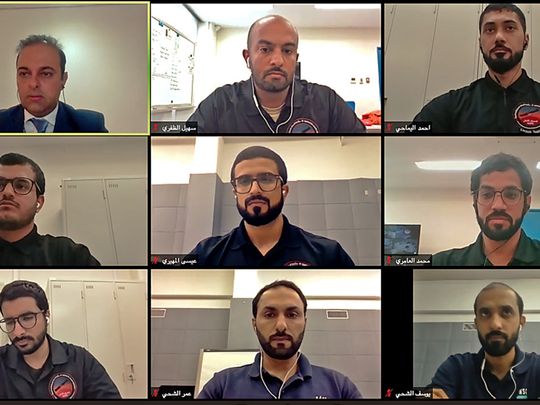
Dubai: The Emirati engineers working on the launch of Hope Probe are multi-tasking to cope with the challenges brought by having a smaller team on site at the Tanegashima Space Centre (TNSC).
From the original plan of having 30 engineers, the Emirates Mars Mission (EMM) team currently has only eight members in Japan overseeing and coordinating all protocols to ensure all systems are ready for launch on July 15
This was shared by Suhail Al Dhafri, EMM deputy project manager, spacecraft development, during an online media briefing on Monday.
When asked by Gulf News to elaborate, Al Dhafri said they were able to cope with the challenges by appointing engineers to do tasks similar to their line of work.
“For example, mechanical work is close with propulsion, that is why Mahmood Al Awadhi (mechanical subsystem lead) started learning fuelling techniques,” Al Dhafri explained.
“Essa Al Mehairi (electrical subsystem lead) and Khalifa Al Mheiri (spacecraft communication subsystem lead) have done electrical testing. They’ve also checked the batteries of (Hope’s) solar panels on top of coordinating electrical ground support and equipment test,” he added.
The rest of the Emirati engineers in Japan are Omar AlShehhi, integration and testing lead; Yousuf AlShahi, thermal subsystem lead; Ahmed AlYammahi, senior engineer, mechanical manufacturing unit; Mohammed AlAmri, mechanical engineer.
Hope during pandemic
The coronavirus (COVID-19) pandemic and tough global travel conditions have hampered the movement of other UAE engineers.
EMM said engineers were sent to Japan in April, ahead of the original plan. Normally, engineers and the spacecraft were required to be at the launch site 40 days before the scheduled lift off.
Al Dhafri noted: “By our strength and working together we were able to achieve whatever we wanted to achieve. The coronavirus has posed a great challenge but it also brought us together and we found new ways to meet the challenges.”
Al Dhafri also assured there is no threat of contamination at TNSC.
“The Probe is placed in ‘clean room’ (a controlled environment where pollutants, microbes and aerosol particles are filtered out) and we have strict quarantine procedures. The island is very isolated with very limited transport and there is a regular check onsite conducted by JAXA (Japan Aerospace Exploration Agency),” AlDhafri explained.
Meanwhile, he noted they are closely monitoring the weather at Tanegashima island, which is forecast to be rainy in the days leading to the launch.
He said they will have a comprehensive weather forecast one week before the launch and there will also be an hourly weather check during launch day, which is crucial during the go/no-go decision.








